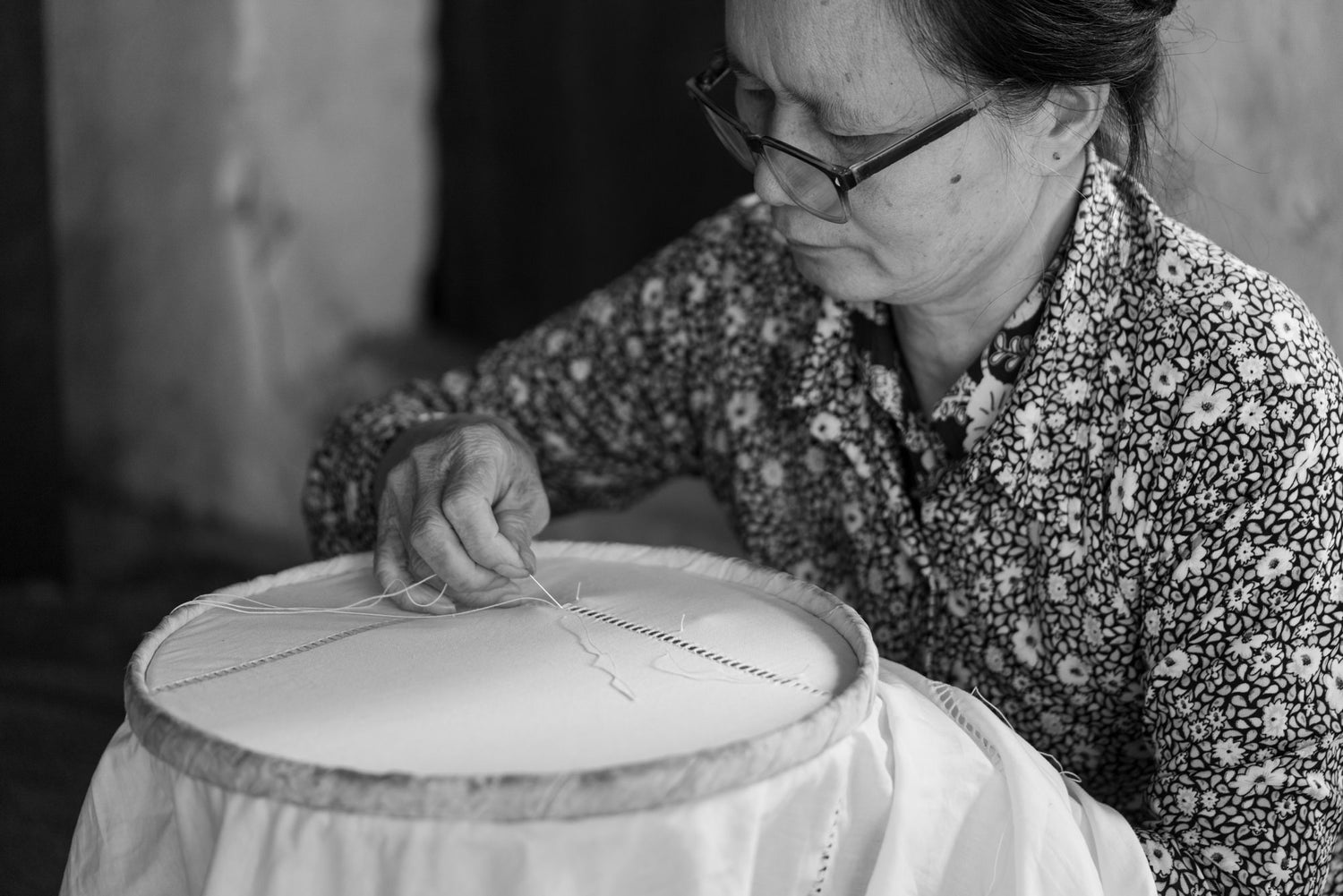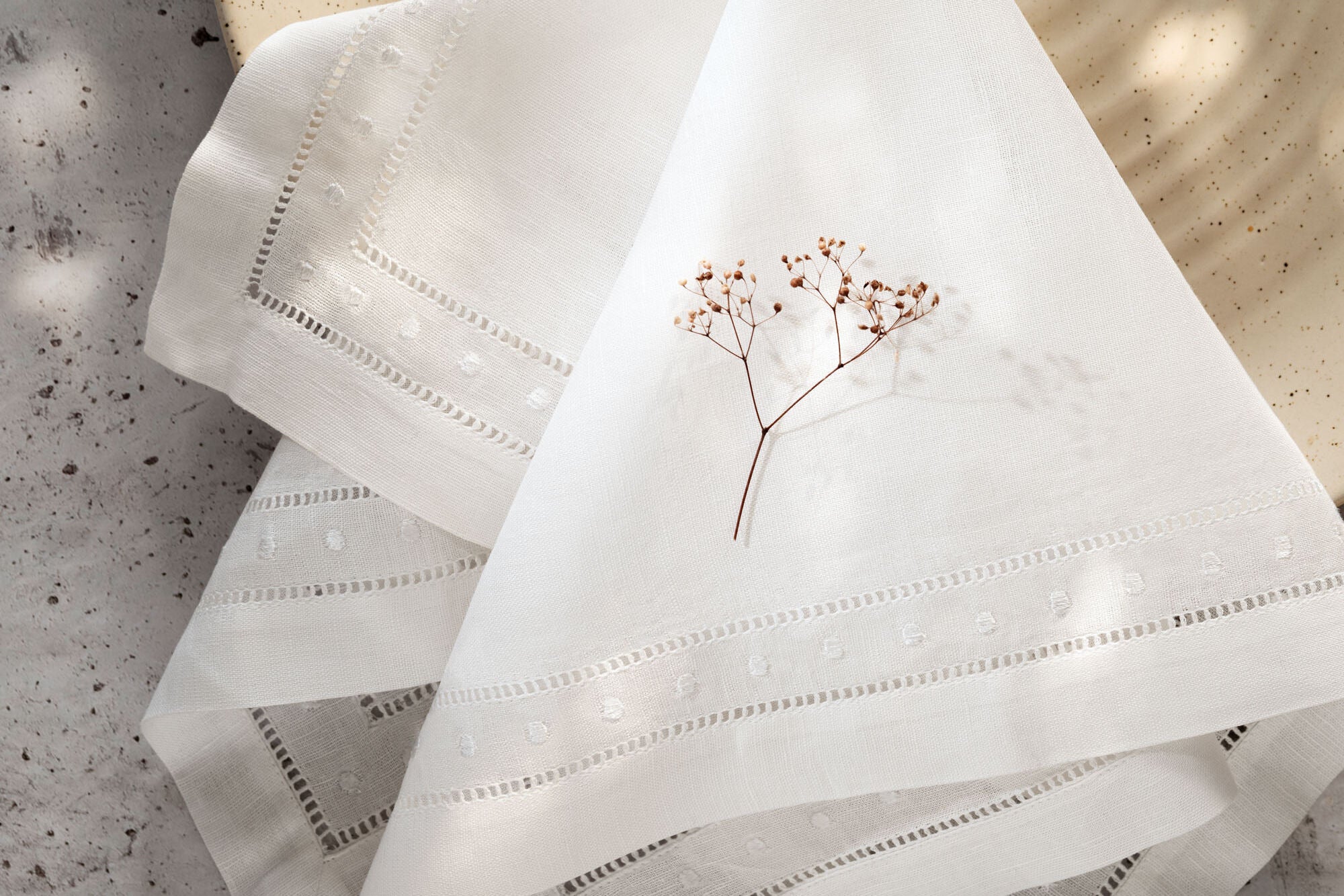Hand-crafted linen napkins embody not only artistry but also passion, love, and devotion. O'lucio Home's exquisite hand-made products are the creations of artisans from a small village in northern Vietnam, celebrated for its rich heritage of handmade embroidery. In this blog, O'lucio Home introduces one of our skilled artisans, who has dedicated over half a decade to carefully crafting designs, just as her parents had done before her.
Meet Nguyen Thi Diep, a third-generation artisan who was born and raised in a small village in northern Vietnam. Growing up in a family where both her parents and grandparents were skilled embroidery artists, she was immersed in the rich tapestry of Vietnamese culture throughout her childhood. This upbringing fostered in her a deep appreciation for traditional craftsmanship and a keen eye for modern design. Her parents specialized in narrative embroidery, bringing scenes from Vietnamese folklore and ancient legends onto fabric. Spending countless hours with them, she not only learned embroidery techniques but also absorbed the family traditions and customs that had been passed down through generations.

At the age of nine, she had her first lesson about the family tradition. Her mother, a skilled artisan with over 30 years of experience at the time, not only guided her through the techniques but also instilled in her a profound connection across generations. Beyond imparting the craft, her mother conveyed her own enthusiasm, passion, and sense of responsibility for the art of handmade embroidery.
At the age of 18, she married a man from the same village, who, like her, was a third-generation traditional embroidery artisan. Their marriage symbolized more than just a union between two individuals; it represented the fusion of distinct family histories and artistic legacies. “Our parents raised us with the primary income from the embroidery profession, and we continued to do so with our children," she said. Their shared passion for embroidery extended to the next generation, as they passed on the delicate craft of needlework and hemstitching to their children, thus creating a family tapestry that transcends generations. "My children have become the fourth generation of artisans," she proudly told us.
Her passion for hand embroidery and hemstitching remains as bright as it did during that first encounter, it’s never dulled, not even for a moment.

“Basic tools like needles and thread are the heart of hand embroidery and hemstitching,” she said. The artisan not only chooses high-quality needles but also chooses threads suitable for each specific product. This careful selection not only affects the embroidery but also ensures durability and optimal care for each piece. In addition to traditional embroidery techniques such as punching, twisting, and tarping, embroidery today has also developed many more complicated techniques, such as double-sided embroidery, single-layer embroidery, and double-layer embroidery. “The more hidden and smoother the thread, the more artistic and aesthetic value the product has,” she revealed. From the fabric selection process to the hand embroidery techniques and finishing rituals, every step is an integral part of this artisan's creative journey.
“An artisan is not only the inheritor of an art but also the one who shapes and develops it,” she said. Her hand embroidery journey is not only about following in previous generations' footsteps but also about creativity and transformation, renewing the core values in traditional hand embroidery art. This is the power of tradition in a true artisan family.
“I'm very worried that one day, if the next generation doesn't do this job anymore, the hand embroidery and hemstitch profession will be lost forever," she sighed. “My grandchildren no longer follow in the family tradition’s footsteps as they decide to forge their own paths in technology,” she said. The decision to diverge from the family tradition is influenced by changing times with better career opportunities in big cities.




Leave a comment
This site is protected by hCaptcha and the hCaptcha Privacy Policy and Terms of Service apply.